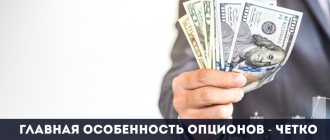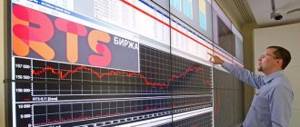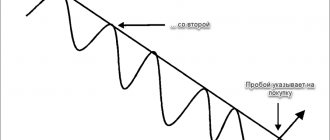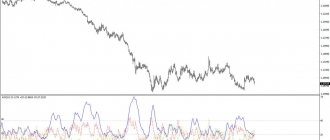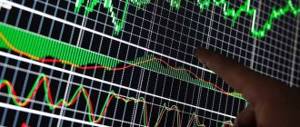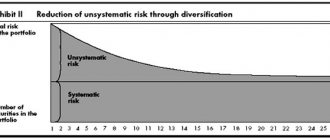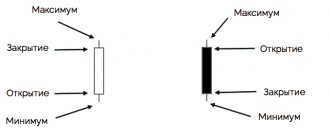Experienced investors use futures to hedge the risk of a possible drawdown in their portfolio. How does this happen in practice and what is the difficulty of working with this financial instrument?
Since the beginning of May, investors have the opportunity to trade futures at 1/10 of the value of Bitcoin. This financial instrument was launched by the Chicago Mercantile Exchange CME Group, which added Bitcoin futures in 2021. In February 2021, Ethereum futures also appeared on the CME. It became the first altcoin to be traded on an American stock exchange.
What is a futures?
A futures is a contract concluded between two investors. The subject of the agreement is the delivery of the asset within a clearly established time frame and at a pre-agreed price. In such a trading operation, the exchange acts both as an intermediary and a regulator.
Let's try again to understand what a futures is, but now in simple words . Let us explain the essence of this derivative financial instrument using an example. Let's say you have 3 tons of grain, but this year a record harvest is expected, which will ultimately cause the value of this asset to decline. How to insure yourself against possible risks?
It is enough to conclude a futures contract by selling grain at a set price . Let’s imagine that at the time the agreement was signed, the price had not yet dropped. Thus, if the fears come true, the buyer of the asset will lose money, while you sell the grain at the highest possible price.
However, the proposed example is more of a theory , because private investors do not trade grain, they earn money through speculative trading operations. Futures trading is designed in such a way that each participant in the transaction will be able to transfer their obligations to third parties, which actually allows you to speculate without waiting for the actual delivery of the asset. Not to mention that there are special futures contracts that do not require physical delivery of an asset.
Educational introductory videos
To reinforce the material, be sure to watch a series of videos that will introduce you to futures.
First.
Second.
CompoteThird.
Standard (vanilla) options
An option is a more complex financial derivative, sometimes thought of as a second derivative because it is always based on a futures contract rather than an actual commodity.
In simple terms, buying an options contract gives a trader the opportunity to insure an asset against falling or rising above/below a specific price. The value of an asset or the exchange rate of a currency pair is divided into strikes - round numbers in increments of 50 points. For each of them you can:
- Buy a Put contract, which assumes a profit from a fall below the selected level, equal to the futures if the contract were sold at the strike price;
- Buy a Call contract and receive a profit from growth above the selected level, equal to the futures profit if the contract was purchased at the strike price.
The insurance is valid during the expiration period - a month, a quarter, which coincides in terms with futures, but occurs a day or two later. The shift is justified by the accrual of a new series of deliverable options futures.
Like any insurance buyer, the trader only risks losing the cost of the premium paid at the strike, but retains the opportunity to profit from the rise/fall. The Seller immediately receives a profit from the transaction, since he is credited with the premium paid by the Buyer, but risks recording an unlimited loss at the time of expiration.
In reality, 80% of the premium paid goes to the Sellers, and the remaining 20% is compensated through complex strategies. Options are the only asset whose financial result and the size of the premium for each strike can be calculated in advance. Economists Fisher Black and Myron Scholes, who discovered the model for calculating the cost of a strike, received the Nobel Prize for this, and the company Long-Term Capital Management showed how you can make brilliant money and lose fantastically.
Another example of high earnings on option contracts was the strategy of the team of students - the creators of the Panda robot, who publicly presented the work of the algorithm at the “Best Private Investor” competition. The robot beat the market makers, increasing the liquidity of the derivatives market hundreds of times and achieving a profitability of 8000% in three months of trading.
The high profit was ensured by the “volatility smile” - a constructed curve of changes in the theoretical value of Put and Call option premiums, which made it possible to buy and sell contracts with a deviation from its values.
Unlike the spot or futures market, options, as befits a second derivative, have a non-linear change in the premium on each contract, which depends on:
- From time to the end of expiration it tends to zero;
- The speed at which the course approaches the strike;
- Volatility.
Classification of contracts
Futures are divided into two categories: delivery and settlement . Naturally, trading technology changes depending on the type of contract. Therefore, before starting trading operations, it is necessary to carefully study the characteristic features of both types.
Delivery
The essence of deliverable futures contract is clearly expressed in the very name of the derivative. It involves completing a transaction with the actual delivery of goods. Thus, at the end of the contract's maturity, the buyer must receive the asset at a predetermined price. Compliance with the conditions is monitored by the exchange ; if the rules of the transaction are violated, a fine is imposed on the participant.
Settlement
A settled futures is the radical opposite, because according to the terms of this contract, the actual delivery of the asset is not provided . Payments between participants are made exclusively in cash.
From all that has been said above, we can conclude that delivery futures are used mainly by agricultural and industrial enterprises that are really interested in purchasing raw materials or finished goods at the best price. In turn, settlement contracts are used by investors to make speculative transactions.
Important features used when trading currency pairs using option levels
- Entry into weekly options must be made before Wednesday; pending orders are canceled on Thursday.
This tactic is associated with a sharp outflow of liquidity into options, which begin on Wednesdays.
- Rolling - moving the Maximum Interest levels in 80% of cases predicts a strong movement or trend change - Call or Put to the right predicts an increase in the rate, Call or Put to the left predicts a fall.
Options sellers maximize profits by selling options closer to the current price, or minimize losses by writing contracts as far from the current price as possible, having the inside knowledge to predict in advance the direction of price changes in the future. As described above, the Seller’s risk is “infinite”, so this work requires accurate forecasts.
The error of this method of analysis is due to the fact that it is possible to confuse the rolling signal with a simple movement of the OP due to the depreciation of the premium - the time decay constantly affects it and the positions. Therefore, traders can simply exit options that are no longer worth anything.
- Reversing the levels with the maximum open interest Put and Call is a signal to prohibit opening a deal.
Traditionally, Option Sellers offer a Call above the current price level and a Put much lower, increasing the likelihood of the contract ending OTM - out of the money. If the levels are reversed, a complex combination of option strategies is operating in the market, this will, in most cases, lead to a strong rise or fall with no reversal.
- The importance of continuous analysis (from day one) of a new option series.
The option premium changes daily due to time decay, but, as practical experience of working with maximum OI levels shows, the first point of intersection of quotes and the found level is important. An attempt to enter short “lower” or long “higher” based on analysis, without taking into account the previous reversal, can lead to a loss.
Since the strategy is counter-trend, the exchange rate may return to the maximum values reached, or the resulting level rolling signal will force the trader to leave the position with a loss.
Key differences between futures and stocks
A share is a financial instrument presented in the form of a legally approved document. Participants in a transaction with this security are vested with certain obligations and rights. In turn, a futures is a derivative, that is, a derivative instrument expressed in the form of a contract for the supply of an asset.
Thus, you can buy stock futures, index futures, oil futures, gold futures and other assets. The topic of stock trading for beginners and not only is covered in detail in the article “Securities and shares: no discounts or marketing, only the stock exchange.”
Futures trading also differs from stock trading in that the contracts have built-in leverage .
This feature fully determines the fact that futures are perhaps the most liquid instrument. Below is a video that explains in detail how leverage works.
Features of reports on options on “reverse” currency pairs
The CME exchange publishes quotes only in the “direct pairs” format, that is, USD is always in the denominator. Therefore, when analyzing USDCHF (other inverse pairs are excluded from the strategy), the trader must independently calculate strikes (divide the unit by the “table value”) and perceive the signals in a mirror manner:
- A fall below the Put level is a signal to sell;
- Growth above Call – buy;
The figure shows a visualization of USDCHF option levels, where the strike for the maximum Open Interest for Call and Put is the level of 1.055, showing a strong drop in the rate below these values. This means that the rate has risen above 1/1.055 = 0.95 and you should look for a selling point. Option premiums in the strike table are indicated in points, so they do not need to be recalculated; the levels are adjusted by adding and adding their values to the division result, in this case 0.95.
Trading platforms: CME and FORTS
Futures trading is predominantly carried out on the American and Russian markets, CME and FORTS , respectively.
USA
The Chicago Mercantile Exchange is one of the most famous trading platforms in the world. In 2013, CME absorbed the equally well-known exchanges NYMEX and CBOT. In the American market, investors buy futures for international assets, such as Brent oil and shares of well-known issuers.
To start working on the Chicago Stock Exchange, an investor needs to select a broker who would provide a similar service. The impressive size of the guarantee on futures is perhaps the stumbling block due to which Russian investors refuse to enter the American market. However, some brokers offer the most favorable trading conditions.
Here special attention should be paid to Just2Trade. This broker provides the opportunity to trade on American exchanges with a minimum deposit of $200. Of course, this is a profitable offer . You can familiarize yourself with other terms of cooperation by reading the article “Review of the Just2Trade broker”.
Open a brokerage account Just2Trade
Russia
As for the Russian market, the FORTS . The most liquid instruments of this trading platform are futures for Gazprom shares, for the RTS index, as well as for leading currency pairs. In the domestic market, trading futures for beginners usually means choosing shares of Gazprom or Sberbank. Of course, the RTS index is characterized by greater liquidity, but such trading is accompanied by additional difficulties, so if you do not have experience, it is better to start with something simpler.
Of course, trading on the FORTS derivatives market also requires a broker . The most favorable terms of cooperation are offered by the well-known company Zerich.
- Firstly, it is worth noting the enormous experience - the company has been operating since 1995;
- Secondly, the minimum threshold for entering the Russian market is only 30,000 rubles;
- Thirdly, the company sets minimum commissions .
Anyone can get acquainted with the additional terms of cooperation by reading a full review of the Zerich broker. This article examines in detail the history of the formation and development of the company, current offers for trading on financial markets, and also provides visual instructions for registering a deposit.
Below you can watch a portion of the webinar that explains the difference between CME and FORTS
Choosing a broker for trading financial instruments
The widest selection of financial instruments for working in DIFFERENT markets is presented in the TOP - 13 recommended companies of the major league of broker ratings of the Masterforex-V Academy. These are 1. Nord FX, 2. Dukascopy Bank SA, 3. FXPro, 4. Interactive Brokers, 5. Alpari (Alpari), 6. Swissquote Bank SA, 7. OANDA (Oanda), 8. FXCM, 9. Saxo Bank ( Saxo Bank), 10. FOREX.com, 11. FIBO Group, 12. Fort Financial Services (FortFS), 13. Finam (Finam).
According to statistics from our free autocopy rebate service pro-rebate.com, about half of successfully trading traders opened deposits with ]NordFx[/anchor] , which provides
- quotes EUR USD, GBP USD, GBP CHF, GBP AUD, GBP CAD, GBP NZD, CHF JPY, AUD JPY, USD JPY, USD CHF, NZD JPY, USD CAD, NZD USD, AUD USD, USD RUB, EUR RUB, AUD CHF, USD UAH, USD BYN, USD SEK, USD NOK, USD CNY, EUR CHF, EUR JPY, EUR GBP, EUR NZD, EUR AUD, EUR CAD, EUR NOK, EUR SEK, GBP JPY, GBP SEK, GBP NOK and etc.;
- indices S&P 500, Dow Jones 30, DAX 30, NIKKEI 225, FTSE 100, NASDAQ-100;
- 16 cryptocurrencies - BTC, ETH, XRP, LTC, BTG, ETC, EMR, NEO, OMG, EOS, IOT, DSH, ZEC, etc.;
- cryptocurrency indices - 10ALT (10 altcoins per USD), TOP14Crypt (14 cryptocurrencies per US dollar), TOP3ALT (3 altcoins per US dollar), etc.;
- CFD of oil, gold, silver, etc.
- investments in balanced investment portfolios of large global investment funds with trust management (MD) Pro-Industry Fund, Pro-TECH Fund, Pro-Expert Fund and American shares of the NYSE and NASDAQ - Intel Corp., Microsoft, McDonald's, Apple, Motorola, Boeing, Alibaba, Nike, Coca-Cola, Visa Inc., PayPal, Google, Facebook, Ferrari, 21 FOX, Pfizer, HP Inc, Jonson & Jonson, Nvidia, Cisco, Electronic Arts, Mastercard, PayPal, Fedex, etc.
- PAMM and RAMM accounts.
The broker provides
- a trading platform familiar to all traders for Meta Trader 4, Meta Trader 5 and Meta Trader 4 Mobile traders with the largest group of built-in indicators and oscillators for technical analysis of forex charts, stock, commodity and cryptocurrency markets;
- minimum trading account from $10 recommended deposit for money management MF from $800-$1000 when trading 0.01 lot)
- leverage from 1:50 to 1:1000;
- All types of trading strategies are allowed, from automated advisors to day trading, swing trading, long-term, medium-term and position trading, scalping, the use of martingale, anti-martingale methods, etc.
- financial regulation CySEC in the EU.
When opening a real trading account from $3000 at NordFx, each trader receives the opportunity to receive free training for 1 year at the Masterforex-V Academy with daily trading tips on a closed forum and on Skype.
Where can I find a complete list of futures?
Naturally, every trader begins his work by selecting financial assets that could later be included in his investment portfolio. The article “Investment Portfolio of Securities” describes in detail what it is, as well as what rules must be followed during the formation of this portfolio. However, where exactly can you find a list of futures contracts available for trading? The full list is posted on the official website of the exchange.
Let's consider the procedure for searching for an asset using the example of the Chicago Mercantile Exchange .
- In order to later find the required contract in the trading platform, you first need to determine the ticker of the trading instrument. Let's say we need to find gold .
- Opening CME Group exchange website
- After this, you should open the section “Trading»-«Products" Among the subsections that appear, select “ Metals»
- In the column "Precious"You will see a contract for gold, it is designated as follows"GC Gold»
- We open detailed information on gold futures. In particular, you need to find a link to the specification of this contract
You will need this link more than once during trading. The fact is that such a table contains universal information on the contract, including the instrument ticker, in this case it is GC .
If you don't understand any section of the table, use Google's machine translation:
If you are not comfortable viewing information through the exchange, use the website rjobrien.com . On it you can look:
- contact specification;
- list of symbols;
- futures calendar and other useful information.
Speculation and volatility of 1600 points in 1 minute on CME
CME does not comment on the July 6, 2017 silver price flash crash. Silver futures prices on the COMEX trading platform collapsed in a short time, with the price of the first available (most active) September futures falling from $16.06 to a low of $14.34, all in a period of 1 minute. In the next 2-3 minutes, the futures price then recovered almost all of its losses. From high to low, this COMEX futures contract fell almost 10.7% before rebounding almost 11%.
In total, over 8,300 September silver contracts were traded in 4 minutes.
The principle of selecting futures by date. What is the difference?
The specification of each contract specifies the futures expiration date . As soon as the contract is executed, the actual result of the trading operation is calculated, that is, the seller receives money and the buyer receives assets. In futures trading, transactions are closed on a centralized basis through the expiration of absolutely all open positions. Also, for some instruments you can see that several contracts for one asset are traded; naturally, the delivery time is also different.
The execution date is indicated by a letter, and the year by a number . The symbol system is unified, that is, it is used on absolutely all exchanges on which futures are traded. The expiration date varies depending on the underlying asset. For example, execution of index and currency futures occurs at the beginning of the third week of March, June, September or December. As a rule, this is the 20th or 21st.
How do investors select futures by date?
It all depends on the trading strategy used. Conventionally, contracts are divided into long-term , short-term and medium-term . Depending on his own preferences, the trader gives preference to one or another type. Below you can watch a video that very briefly explains how to properly CME futures specification
Why do currency pair quotes reverse from option levels?
Option levels are considered by Forex traders as lines of resistance and support, and therefore are used in a countertrend strategy for trading currency pairs. This ideology arose due to the nature of contracts.
The buyer of a naked option, who does not have a position in the underlying asset, receives a profit:
- From an increase in the Call premium as the rate increases and moves away from the strike at which the option was purchased;
- From an increase in the Put premium as the rate falls below the contract purchase strike;
In case of an incorrect forecast, the Buyer will only lose the option premium paid. In contrast, the Seller of the option risks unlimited loss, and the profit in the form of the premium paid by the Buyer will remain with him only if the option “burns out of the money”, i.e. The exchange rate at the time of expiration should be:
- Above the Put level of the sold option;
- Below the Call strike at which the contract was sold.
Therefore, the trader, in most cases, at the beginning of the contract period, will observe a picture of the maximum Put and Call Open Interest removed from the current quote values. Sellers will not write a large number of contracts at first-day prices for no particular reason. The maximum OI will be approximately at the edges of the volatility of the week, month or quarter.
Traders who bought Put and Call options much lower and higher than the current exchange rate of the currency pair (and judging by Open Interest, these are the majority), purchased them at a low cost, which will increase significantly when and if the strike equals the price.
But even if this condition is met, there may be no profit: over time, the option premium tends to approach zero as the expiration date approaches. Therefore, as soon as the currency pair approaches the strike, profit taking begins.
It differs from the foreign exchange and stock exchange markets, since a take profit cannot be placed on an option, because the pricing of the contract premium depends on many parameters described by the complex Black-Scholes formula. You can lock in the premium instantly by selling an equal number of futures against a Call option or buying against Put contracts.
The higher the open interest of the strike, the more futures will be sold or bought against the fall or rise of the currency pair. In theory, as the price increases or decreases, one can expect a gross growth of counter-trend transactions equal in volume to the OI of the strike price crossed by the quotes.
Thus, the size of Open Interest determines the probability of a trend reversal and the strength of the level:
- Resistances – by the number of open Call contracts;
- Support – by open interest of Put contracts.
The material provides a simple example of the operation of a mechanism that causes a reversal; in practice, option strategies are a complex structure of purchased and sold contracts of various types associated with currency spot and futures. In any case, the price movement causes a reorganization of the so-called exposure, which can lead to a reversal in quotes.
To find turning points, traders use monthly and weekly (Friday) options. The former provide the most significant levels of quote rollback, the latter guarantee this movement with less probability.
Which futures have the greatest investment attractiveness?
This topic has already been partially touched upon earlier using the example of the Russian derivatives market FORTS. However, the principle remains the same, even if we are talking about American trading platforms. Popular indices always have the greatest volatility and liquidity: RTS, Dow Jones, S&P and others. However, again, it is worth emphasizing that only experienced traders understand how to trade futures of this caliber.
Popular currency pairs are also not particularly inferior to indices in terms of liquidity and volatility, but at the same time they are easier to understand . We are talking about such assets as EUR/USD , AUD/USD , GBP/USD , CHF/JPY . Basically, there is always a demand for currencies with the dollar. Naturally, the volatility of an asset directly depends on the current trading session. You can always take the simplest route and purchase futures on shares of a popular issuer. If in Russia “ Blue chips ” can be called Gazprom or Sberbank, then in the USA they are Google, Apple, Intel and other well-known corporations. Also a win-win option would be trading futures on precious metals, especially gold.
The video talks about the five most popular futures in the United States .
Types of margin
For futures trading, it is important to understand the difference in margin types:
- Initial (or deposit) – the required guarantee fee that the exchange charges when opening a position. Returned after the contract is closed. On average, the margin size depends on volatility. For BTC, it can be 40% or more of the market value of the underlying asset (CBOE, CME and other exchanges).
- Maintenance margin is the required amount that must be on the account to prevent forced closure of a position (margin call). The size of margin requirements depends on the exchange that sets its own conditions for trading. Therefore, the indicator may differ on different sites.
- Variation margin is the amount of funds that constitutes a loss or profit from closed contracts. The value is calculated based on the results of the trading session.
How many futures can you buy for 1000/5000/10000 dollars without leverage?
To answer these questions, we need to look at a specific example. First, you need to understand how the cost of one futures contract is formed? On the first day of circulation of the instrument, the price is set by the trade organizer - the exchange. Subsequently, futures quotes change under the pressure of supply and demand.
Clearing - write-off, as well as accrual of VO ( variation margin ) is carried out daily 5 times a week, except holidays and weekends. Consequently, profit and loss are also calculated daily , and not only during the period of sale of the trading instrument. At the moment of opening a trading operation, a certain amount of money is frozen in the investor's account; it will not be available as long as the investor is the holder of this contract.
On exchange websites you can find complex and confusing collateral tables, which are extremely difficult for a beginner to interpret. Therefore, it is better to use the assistant site rjobrien , which contains a summary table of margin deposits. An alternative source is the tradeinwest website ( futures specification , margin requirements ).
Example
As an example, we use the same gold futures, which is located in the CMX . Look in the Spec Init , which displays the initial margin. Let this parameter be equal to $10,125 . This means that to purchase and stable trade such a contract, an investor will need a deposit of at least $12,000-13,000.
The next column displays the parameters of the maintenance margin, in our case this is the amount of $7,500 . If the deposit contains less than the specified amount, a so-called Margin Call . Accordingly, you will either have to record losses or deposit additional funds.
As for commissions , it all depends on the broker. By collaborating with companies that were proposed earlier, the investor will be able to save a lot on commission costs . I will also provide a table with the conditions of major brokers.
| Company | Just2trade | United Traders | BKS | Tinkoff investments |
| Minimum deposit | From $100 | $300 | from 50,000 rub. | Unlimited, you can even buy 1 share, they recommend starting from RUB 30,000. |
| Commission per cycle (buy + sell trade) | 0.006 USD per share (min. 1.5 USD), 0.25 USD for each application. that is, per lap – $3.50 | “Beginner” tariff – $0.02 per share Average $4 per round | At the “Investor” tariff – 0.1% of the transaction amount, at the “Trader” tariff it is reduced to 0.015% | 0.3% for the “Investor” tariff |
| Additional charges | The ROX platform will cost at least $39/month. (for the American market), for an additional $34.50 they connect Canada/TSE, Level II On the over-the-counter market, the additional fee is 0.75% of the transaction volume (minimum $30), in the case of dividends - 3% from the issuer (minimum $3) | On the Day Trader tariff, they charge $60/month for the Aurora platform, free on other plans | If the account has less than 30,000 rubles - 300 rubles/month. for access to QUIK and 200 rub./month. for access to the mobile version of QUIK, | — |
| Account maintenance cost | $5/€5/350 rub. reduced by the amount of the commission paid | — | 0 RUR/ month on the “Investor” tariff. On other tariffs, funds are debited only if there was activity on the account this month | Free for the "Investor" tariff |
| Leverage | for Forex Up to 1 to 500 for stocks up to 1 to 20 (day) to 1 to 5 (night) | 1 to 20 on the Day Trader tariff, this is the maximum leverage (daily) | Calculated for each share, within the range of 1 to 2 – 1 to 5 | Calculated for different instruments, the calculation is linked to the risk rate |
| Margin call | -90% | Standard -30% of the deposit, in technical terms. support can be set -80% | Calculated based on the risk for each security | Depends on the asset |
| Trading terminals | MetaTrader5, ROX | Aurora, Sterling Trader, Fusion, Laser Trader, Volfix.Net, Pair Trader | My broker, QUIK, WebQUIK, mobile QUIK, MetaTrader5 | The purchase of shares is implemented like an online store, professional software is not used |
| Available markets for trading | Forex, American, European and other stock markets, cryptocurrency | American and other stock markets, more than 10,000 assets in total, cryptocurrency | Foreign exchange, stock, commodity markets, there is access to foreign exchanges | American and Russian stock markets |
| License | CySEC | Lightweight license from the Central Bank of the Russian Federation | TSB RF | TSB RF |
| Open an account | Open an account | Open an account | Open an account |
Setting up and algorithm for calculating option levels
Open the Open Interest Profile page of the CME website and select the middle OI & Settle Detail window.
Select the analyzed currency pair from the “Select Product” drop-down list. By default, EURUSD of the nearest expiration month will be selected, the date of which and the number of remaining days can be found in the window to the right of the instrument selection option.
Determine the maximum RO Call and Put strikes as resistance and support levels:
In the case under consideration, these will be 1.12 and 1.16, but the levels will need to be adjusted to the size of the option premium, which is known from the table values available in the Option Prices option.
- For a Put option, the premium is 15 pp;
- For Call option – 24 pp.
Thus, the actual location of the levels will be at 1.1215 and 1.1624. The premium changes daily, so the levels are dynamic.
We perform similar actions with weekly options, which are selected from the Weeklies section. We select the nearest week from the drop-down list and plot option lines on the chart; you can make them thinner to distinguish them from the levels of the month.
In the example shown, the levels will be: Put 1.1300 and Call 1.1450.
After plotting them on the chart, adjust the lines according to the option premium table, available through the Option Prices option, adding 39 points to Call + and subtracting 7 points from Put.
How many futures can you buy for $1000/5000/10000 with leverage?
The amount of leverage depends on the trading conditions offered by the selected broker. The most common companies offer ratios of 1:14 and 1:17 .
To understand the calculation scheme, be sure to watch the following videos. It calculates the number of gold futures contracts.
Trading algorithm
- We determine the current value of the futures contract;
- We look at the size of the guarantee;
- We divide the deposit amount by the size of the collateral and get the number of available contracts.
Now let's look at an example . Let's calculate the number of gold futures contracts that we can purchase with a deposit of $1000, $5000 and $10,000. Just a warning: the calculations made are approximate and may vary depending on various trading parameters.
- Current value of a troy ounce 1268$;
- Warranty 6233 rubles or $109 ;
- Leverage 1:14.
We count the number of contracts for different depot sizes. We divide the deposit amount by the amount of the guarantee.
| Deposit, $ | 1000 | 5000 | 10000 |
| Number of contracts | 9 | 45 | 91 |
Thus, we calculated the maximum limit that the deposit can withstand. When entering a trade, it is important not to forget about risk management and the downside of leverage. Let's say you have $5,000 in your account, and you can buy 45 contracts with it. Since you are a smart trader, you limit your risk to 3% when entering a position. In money terms this is $150. This way you work with 1 contract. Depending on the situation, the numbers may change, however, you have no right .
Algorithm for working and analyzing the movement of currency pairs according to the levels of OI options CME
- On the CME website at 7-45 Moscow time (8-00) we tear off a visual histogram of the OP options for the next month, which is published in the preliminary report (Prelim);
- We determine the levels of the maximum OI Call (resistance) and Put (support);
- Let’s go to the “Options Board” table, where we find the cost of the premium for the levels of maximum OP Call and Put;
- We add the found values to the Call resistance, subtract the premium size in points from the Put support and plot the levels on the chart;
- Based on the calculated numerical values, we set the Buy limit (Put minus the strike premium of max. OP) and Sell Limit (Call plus the strike premium of max. OP) or enter the market if the current rate exceeds the found values;
- At 18-00 Moscow time (19-00) we check the positions of the strikes of the maximum OP Call (resistance) Put (support) in the final report, if the position changes, we close existing orders with profit (install used) or recalculate pending ones (Buy/Sell Limit) applications;
- If the order is activated, we set the take profit at the level of the Minimum Payout Point (at the strike level highlighted on the Max Pain histogram), stop loss at 150-250 pp;
- The algorithm for determining levels for weekly options is similar, but the series for the next month has a higher priority and probability of profit.
Useful tips for novice investors
- For novice investors, it is best to start with the Russian derivatives market, using highly liquid trading instruments : the RTS index, Gazprom shares, currency pairs EUR/USD , RUB/USD . Trading futures contracts on these assets is characterized by excellent returns.
- To build a trading system , you must first undergo appropriate training. Investors mainly use mechanical strategies based on the work of indicators. You can also use candlestick analysis tools. To do this, I recommend reading the article “Japanese candles for beginners.”
- Before you start trading with real money, thoroughly hone your skills on a practice trading account . It is also advisable to select two markets at once in which the effectiveness of strategies could be tested.
- Develop your own risk management system to constantly monitor the size of your trading account and reduce the likelihood of a complete loss of your deposit.
- Enter into a user agreement with one of the previously proposed brokers - Zerich or Just2Trade.
Video series for beginners and more
Watch the training webinar conducted by the director of the Zerich . After viewing it, you will learn how to trade futures through the QUIK .
Webinar organized by Finam . It describes in detail the principles of making money from oil and gold.
Useful video about warranty coverage .
An animated cartoon that calculates the cost of purchasing BRENT .
Another video explaining the principle of making money on oil using futures.
Countertrend strategy for trading currency pairs based on the levels of maximum OI of currency options
To find turning points, traders use monthly and weekly (Friday) options. The former provide the most significant levels of quote rollback, the latter guarantee this movement with less probability.
Many strategies on the Internet advise using each level, confirming the reversal using the formation of pin bars or technical indicators, in particular, oscillators. We will look at a strategy based entirely on Open Interest analysis.
Results
We looked at the key features of trading futures contracts. This is a truly profitable derivative financial instrument. Therefore, if you take trading seriously , you will be able to achieve a positive result in the shortest possible time.
Thank you for your attention, dear blog readers! Subscribe to updates to keep abreast of the latest events and be the first to know about current news.
If you find an error in the text, please select a piece of text and press Ctrl+Enter. Thanks for helping my blog get better!
Placing orders
Opening orders differs from other similar operations only in the presence of some features and specifications. Large exchanges have made sure that the process is simple and accessible to every trader.
Algorithm for opening an order on the exchange https://www.binance.com:
- First, you need to transfer funds from the exchange to the futures wallet (carried out by clicking the “transfer” button below the Depth of Market). Enter the required amount and click the confirm button. After this, the balance of the futures wallet will be displayed under the button.
- Before opening an order, you must set the leverage (in the panel above the chart).
- You also need to select the margin type. By default, cross margin is set for all contracts, as it is safer in terms of risk control. However, traders can switch the margin type to isolation from the top panel.
- Then you need to select the order type. Limit trades are pending contracts that are sent to the order book. In the “market” column, purchase and sale transactions are opened at the current price.
- Setting a stop limit (insurance against a course reversal against the forecast).
- To open an order, you must enter the price of USDT and the amount of BTC to be purchased, which allows you to purchase funds in your wallet, taking into account leverage.
- Click “buy” and click the button again after the notification. After this, the deal appears in the list of orders.
To close a contract, you need to go to the “Positions” window. If the margin ratio is close to the maximum percentage values, the position will be forcibly liquidated.
Closing occurs by placing a limit order with a specified price, or at the market price.
You should pay attention to the “calculator” option (icon in the lower right part of the screen, near the window for opening positions).
The calculator allows you to calculate PnL (profit and loss) by entering data into the fields.

